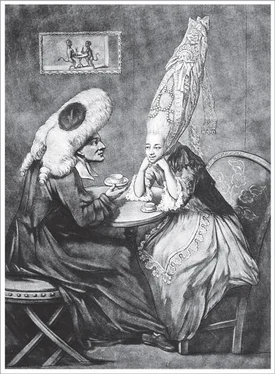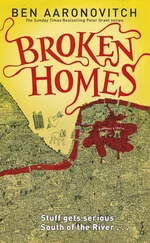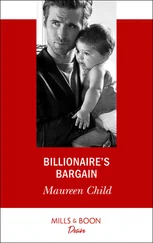Bill Bryson - At Home
Здесь есть возможность читать онлайн «Bill Bryson - At Home» весь текст электронной книги совершенно бесплатно (целиком полную версию без сокращений). В некоторых случаях можно слушать аудио, скачать через торрент в формате fb2 и присутствует краткое содержание. Жанр: Старинная литература, на английском языке. Описание произведения, (предисловие) а так же отзывы посетителей доступны на портале библиотеки ЛибКат.
- Название:At Home
- Автор:
- Жанр:
- Год:неизвестен
- ISBN:нет данных
- Рейтинг книги:4 / 5. Голосов: 1
-
Избранное:Добавить в избранное
- Отзывы:
-
Ваша оценка:
- 80
- 1
- 2
- 3
- 4
- 5
At Home: краткое содержание, описание и аннотация
Предлагаем к чтению аннотацию, описание, краткое содержание или предисловие (зависит от того, что написал сам автор книги «At Home»). Если вы не нашли необходимую информацию о книге — напишите в комментариях, мы постараемся отыскать её.
At Home — читать онлайн бесплатно полную книгу (весь текст) целиком
Ниже представлен текст книги, разбитый по страницам. Система сохранения места последней прочитанной страницы, позволяет с удобством читать онлайн бесплатно книгу «At Home», без необходимости каждый раз заново искать на чём Вы остановились. Поставьте закладку, и сможете в любой момент перейти на страницу, на которой закончили чтение.
Интервал:
Закладка:
For the first three decades of his life he displayed no particular sense of direction. He worked in a family wine business, went to India as an agent for the East India Company—then still a fairly new and undistinguished enterprise—and finally took up soldiering, though without much distinction there either. Sent to France, he was arrested as a spy almost as soon as he stepped ashore and spent nearly five years in prison, albeit in reasonable, gentlemanly comfort.
Prison appears to have had a galvanizing effect on him, for upon his return to England he became with remarkable swiftness a celebrated playwright, producing in rapid succession two of the most popular comedies of his day, The Relapse and The Provok’d Wife . Featuring characters with names like Fondlewife, Lord Foppington, Sir Tunbelly Clumsey, and Sir John Brute, the plays may seem just a touch heavy-handed to us but were the height of drollery in that overdone and highly fragranced age. It was pretty risqué stuff. One scandalized member of the Society for the Reformation of Manners said that Vanbrugh “had debauch’d the stage beyond the looseness of all former times.” Others loved his plays for exactly the same reasons. The poet Samuel Rogers thought him “almost as great a genius as ever lived.”
Altogether Vanbrugh would write or adapt ten works for the stage, but meanwhile, and with no less startling abruptness, he also turned his talents to architecture. Where this impulse came from was as much a mystery to his contemporaries as it is to us. All that is known is that in 1701, at the age of thirty-five, he began work on one of the grandest houses ever built in England, Castle Howard in Yorkshire. How he persuaded his friend Charles Howard, third Earl of Carlisle—described by one architectural historian as “rather nondescript but obviously uncontrollably wealthy”—to underwrite this seemingly insane ambition is no less uncertain. This was not just a big house, it was a place that was positively and determinedly palatial, built “on a scale previously the prerogative of royalty,” in the words of Vanbrugh’s biographer Kerry Downes. Clearly Carlisle saw something in Vanbrugh’s rough sketches, and Vanbrugh, it must be said, did have the backup of a real architect of undoubted gifts, Nicholas Hawksmoor, who had twenty years of experience but was oddly content to work as Vanbrugh’s assistant. It seems also that Vanbrugh may have worked for free. (No indication of money changing hands has ever been found—and on both sides these were men who kept track of such things.) In any case, Carlisle dismissed the distinguished architect he had been planning to use, William Talman, and gave the novice Vanbrugh free rein.
Vanbrugh and Carlisle were both members of a secretive society known as the Kit-Cat Club, an organization of Whiggish* disposition that had been founded more or less exclusively to ensure the Hanoverian succession—the dynastic change that guaranteed that all future British monarchs would be Protestant even if, in the short term, they were not notably British. That the Kit-Cats achieved this aim was no small accomplishment since their candidate, George I, spoke no English, had almost no admirable qualities, and was by one count no better than fifty-eighth in line to the throne. Beyond this one piece of political maneuvering, the club operated with such discretion that almost nothing is known about it. One of its founding members was a pastry chef named Christopher—or “Kit”—Cat. Kit-cat was also the name of his famous mutton pies, so whether the club was named for him or his pies has been a matter of debate in certain very small circles for three hundred years. The club lasted from only about 1696 to 1720—specific details are unknown—and total membership was only about fifty, of whom two-thirds were peers of the realm. Five members—Lords Carlisle, Halifax, and Scarborough and the Dukes of Manchester and Marlborough—commissioned work from Vanbrugh. Membership also included the prime minister Robert Walpole (father of Horace), the journalists Joseph Addison and Richard Steele, and the playwright William Congreve.
At Castle Howard, Vanbrugh didn’t exactly ignore the classical proprieties; he just buried them under a kind of kudzu of baroque ornamentation. A Vanbrugh structure is always like no other, but Castle Howard is, as it were, unusually unusual. It had a large number of formal rooms—thirteen on one floor—but few bedrooms: nothing like the amount that would normally be expected. Many rooms were oddly shaped or poorly lit. Much of the external detailing is unusual, if not actually erratic. The columns on one side of the house are simple Doric, but those on the other are a more ornate Corinthian. (Vanbrugh argued, with some logic, that no one could see the two sides at the same time.) The most striking characteristic of all, for at least a quarter century, was that the house was built without its west wing—though this was not in fact Vanbrugh’s fault. Carlisle got distracted and neglected to put up the west wing, leaving the house conspicuously unfinished. When the wing was finally built, twenty-five years later by another party, it was in an entirely different style, so that the visitor today is met with a baroque east wing as Vanbrugh intended and an inescapably unmatching Palladian west wing that pleased a later owner and hardly anyone else.
Castle Howard’s most famous feature, its domed crown (formally a lantern , from a Greek word meaning “to admit light”) over the entrance hall, was a late addition, and is strikingly out of scale with the building beneath it. It is too tall and too thin. It looks as if it were designed for another structure altogether. One architectural critic noted, diplomatically, that “at close quarters it does not fit very logically on to the building below.” It was at least novel. The only other domed structure in England at the time was Christopher Wren’s new St. Paul’s Cathedral. No house anywhere had ever had anything like it.
Castle Howard is in short a very fine property, but fine in a way that is entirely its own. The dome may be slightly odd, but Castle Howard would be nothing without it. We can say that with unusual confidence because for twenty years Castle Howard was without it. Late on the night of November 9, 1940, a fire was discovered in the east wing. In those days the house had just one telephone, and the phone melted like chocolate before anyone could get to it. So someone had to run to the gatehouse, a mile away, and call the fire department from there. By the time the fire crew arrived from Malton, six miles distant, two hours had passed and much of the house was lost. The dome had crumpled in the heat and fallen into the house. Castle Howard was domeless for the next twenty years, and it looked all right—it was still stately, still imposing, still stolidly grand—but it had lost its perk. When the dome was finally restored in the early 1960s, it became instantly and peculiarly endearing once again.
Despite his limited experience, Vanbrugh now landed the commission for one of the most important houses ever built in Great Britain, Blenheim Palace, that colossal explosion of magnificence at Woodstock in Oxfordshire. Blenheim was intended to be a gift from the nation to the Duke of Marlborough for his victory over the French in the Battle of Blindheim (somehow anglicized into Blenheim ), in Bavaria, in 1704. The estate came with twenty-two thousand acres of prime land, which brought an income of £6,000 a year, a hale sum for the time but not, alas, nearly enough to pay for a house on the scale of Blenheim—and Blenheim was so big as to be effectively off any scale.
It contained three hundred rooms and sprawled over seven acres.* A frontage of 250 feet for a stately home was enormous; at Blenheim the frontage was to be 856 feet. It was the greatest monument to vanity Britain had ever seen. Every inch of it was covered in decorative stony sumptuousness. It was grander than any royal palace and so, not surprisingly, very, very expensive. The duke, a fellow member of the Kit-Cat Club, seems to have gotten along with Vanbrugh well enough, but, after agreeing the general principles of the thing, he went off to fight more wars, leaving domestic arrangements in the hands of his wife, Sarah, Duchess of Marlborough. She thus oversaw most of the work, and from the start she and Vanbrugh did not get along. At all.
Читать дальшеИнтервал:
Закладка:
Похожие книги на «At Home»
Представляем Вашему вниманию похожие книги на «At Home» списком для выбора. Мы отобрали схожую по названию и смыслу литературу в надежде предоставить читателям больше вариантов отыскать новые, интересные, ещё непрочитанные произведения.
Обсуждение, отзывы о книге «At Home» и просто собственные мнения читателей. Оставьте ваши комментарии, напишите, что Вы думаете о произведении, его смысле или главных героях. Укажите что конкретно понравилось, а что нет, и почему Вы так считаете.












